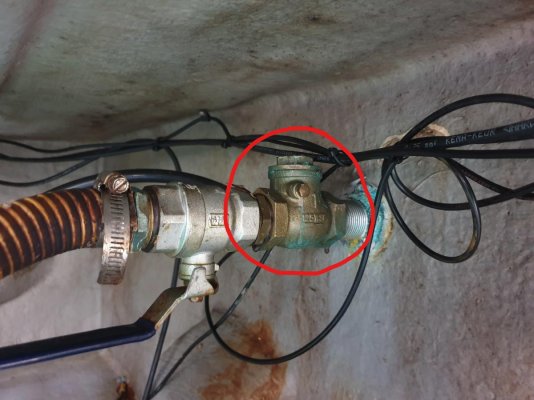HGR
Member
Anyone have an idea as to what the fitting circled in red is? I've just replaced my bilge pump and have no operation as there is something mechanical at this fitting that is stopping flow. New to me boat so unsure how long it has been like this. The one pictured is for the rear bilge, it allows water to exit just fine. The one that has an obstruction is just a nightmare to access on the port side of the port engine, I can just touch it if I lay over the transmission and exhaust.
I've gotten in my dingy and went to the outside of the hull and poked a screwdriver in the thru-hull, the obstruction is definitely between the seacock valve and the thru-hull. It is also solid like metal and sealing the outlet 99%+. With a 2000GPH rule pump I can just get a drip through it.
Anyways, before I go and pull up the salon floor to try and access this thing, I'm hoping there may be an easier way to fix or disable it if it. Step one is figuring out what it is. Both of my bilge pumps have this fitting, no other thru-hull has it.
I've gotten in my dingy and went to the outside of the hull and poked a screwdriver in the thru-hull, the obstruction is definitely between the seacock valve and the thru-hull. It is also solid like metal and sealing the outlet 99%+. With a 2000GPH rule pump I can just get a drip through it.
Anyways, before I go and pull up the salon floor to try and access this thing, I'm hoping there may be an easier way to fix or disable it if it. Step one is figuring out what it is. Both of my bilge pumps have this fitting, no other thru-hull has it.

